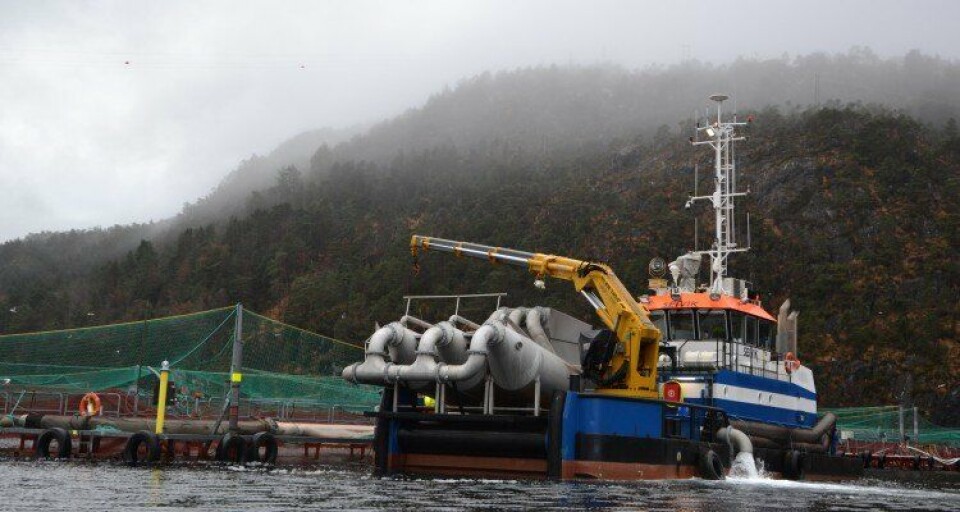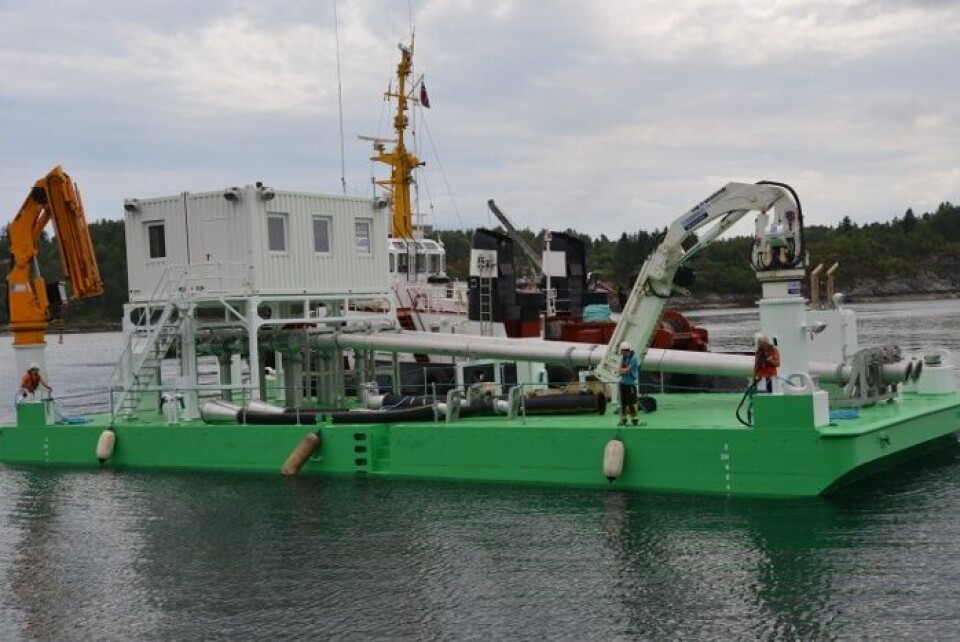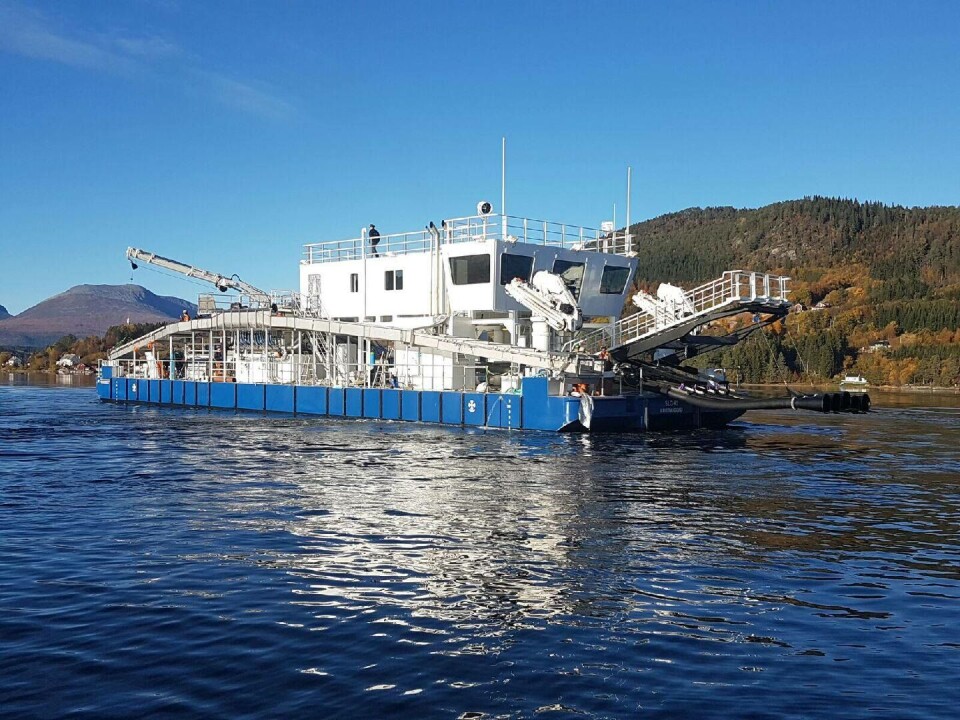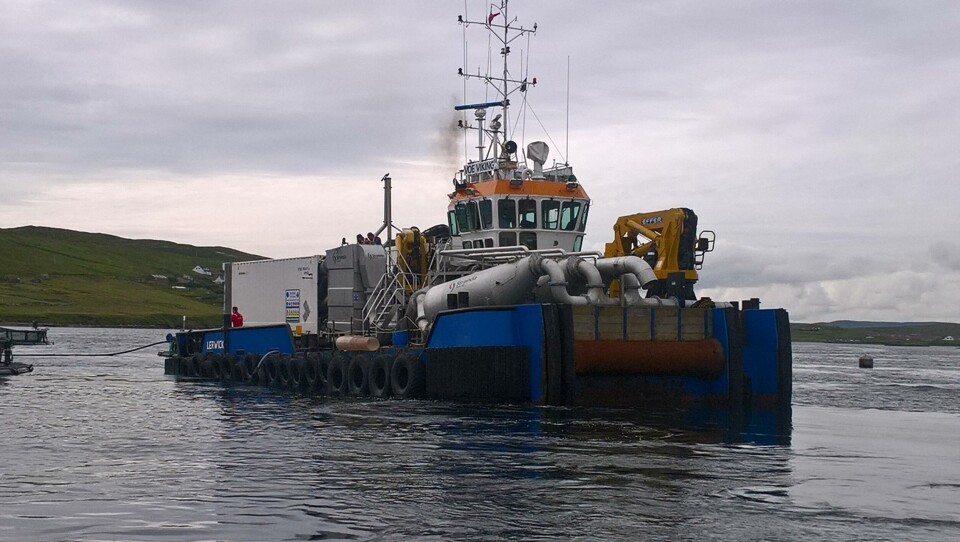
Novel treatments spark escape concerns
Fears that mechanical delousing methods might lead to more salmon escape incidents have been expressed by the Norwegian Directorate of Fisheries, following several escape incidents linked to the new treatment methods. However, producers of the novel machines point to the fact that – with the right training – the treatments should pose no risks.
Two escape incidents connected to delousing were reported in Norway last month, although whether traditional treatments or mechanical ones were being used is not yet known.
On December 20 Marine Harvest announced an escape event in the Åkrefjell area that had occurred in connection with delousing. The number of fish involved is not yet known, but according to the Directorate of Fisheries 749 have since been recaptured. In the same month K. Strømmen Lakseoppdrett had an escape on 6400 salmon with an average weight of 3kg.
Despite the uncertainty surrounding the latest incidents, Henrik Hareide, a supervisor at the Directorate recently told kyst.no that the transition from chemical to mechanical delousing has thrown up fresh challenges.
“We have seen a number of escapes related to mechanical delousing,” he stated.
However, Kyst.no contacted all providers of these systems, revealing a general belief that they operate sound routines but that new regulations in connection with delousing operations could be beneficial. They also observe the value of establishing a good dialogue between farmers and the equipment providers.
Operating systems
There are currently five types mechanical delousing devices in operation in Norway – the Skamik “fishwash”, Optilicer, Thermolicer, FLS delouser and the Hydrolicer – and these are increasingly being used as the first choice in the fight against lice.

Kristian Lillerud, general manager of Flatsetsund Engineering, which since 2003 has developed FLS delousers, underlines the importance of ensuring that salmon producers have had plenty of training before using the system, so there are no misunderstandings when at the cage. He sees a number of precautions as being essential to prevent escapes.
“Good seamanship, an agreement on the tasks in hand and setting up a risk analysis are all essential – so use good, Norwegian common sense,” he says.
He claims he does not know of any escape incidents related to the use of their delouser, but points out that any escapes that may have taken place during delousing are probably related to the carelessness of the operating crew.
“Training in handling the boat and equipment is important, and I think that the strategies used by the farmer and equipment operator can become more coherent,” he says.
Hydrolicers
Odd Einar Grøntvedt, head of the company Hydrolicer Production, says that to prevent escapes, it is important to ensuring a decent mooring which can cope in all weather conditions.
“The position of the outlet pipe relative to the Hydrolicer plays an important role. Good monitoring of the process and focus by the employees is important,” Grøntvedt told kyst.no.
Although he says that no escapes have occurred when using their system, he warns that much can go wrong during delousing.
“There are many factors that can lead to escapes. Good communication between supplier and customer is important to create a safe, secure and good delousing regime,” he emphasizes.

“Implementation of meetings, both before, during and after delousing is an important factor,” says Grøntvedt.
“Inspection of nets before and after the process is also very important,” Grøntvedt reflects.
Thermolicers
The delousing concept with the largest capacity along Norway's coast is currently the Thermolicer, produced by the equipment manufacturer Steinsvik. There are currently 30 Thermolicers in operation – located mainly in Norway but also in the Faroe Islands, Chile and Scotland.
Sales Manager Tore Laastad told kyst.no that, when used correctly, the system does not in itself pose any escape risk.
“The producers themselves or their service partner who conducts the delousing process do the most important job in terms of escape prevention. For Steinsvik, the focus is to provide thoughtful and reliable systems that ensure a safe and gentle handling of the fish,” he informs.
“Any tears in the nets can have major consequences. Best practices for inspection of nets and safe manoeuvring of service vessels is important to avoid escapes. Everyone wants to avoid escapes and changes in legislation could be positive,” Laastad argues.

Optilicers
Frode Håkon Kjølås of Seaside, which produces the Optilicer systems, says that there are currently nine of the machines in operation. Kjølås is not aware of any escape incidents involving their delousing unit.
Kyst.no also contacted Moen Marin, which provides the Skamik system, but has not succeeded in getting any feedback from them.






















































